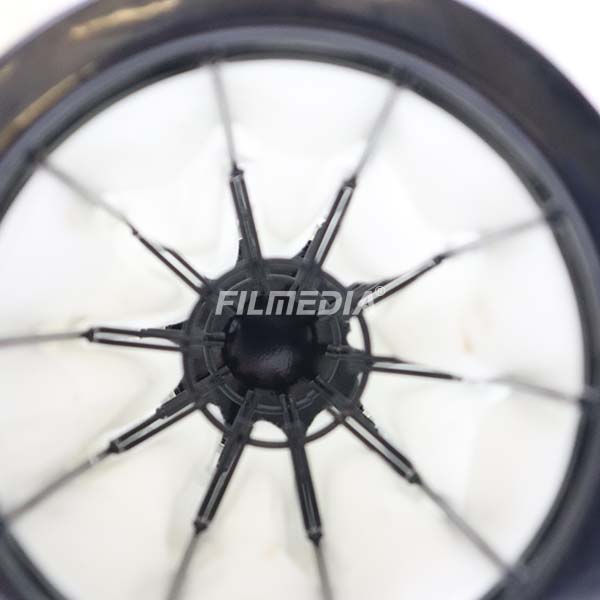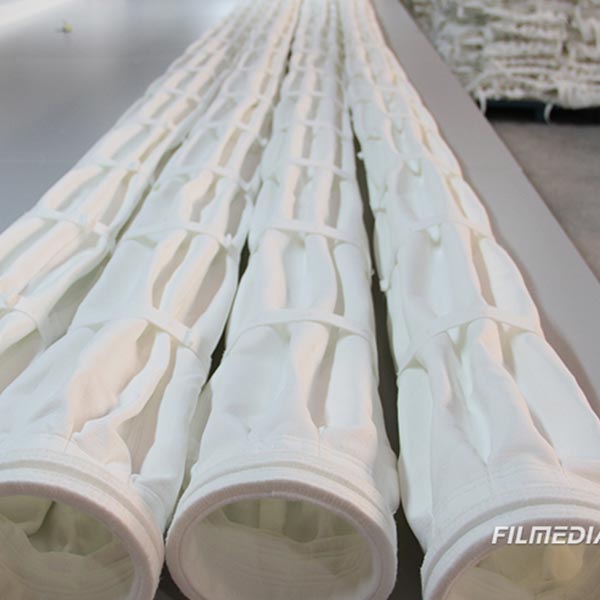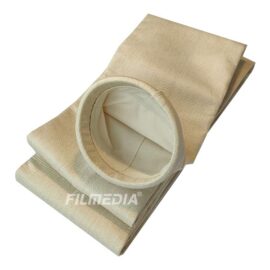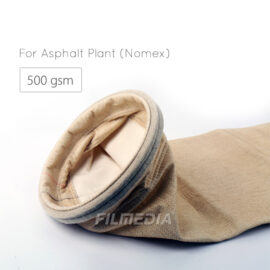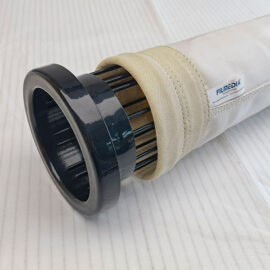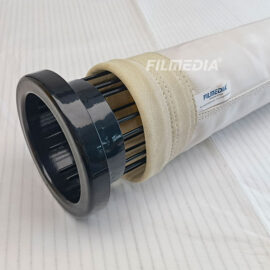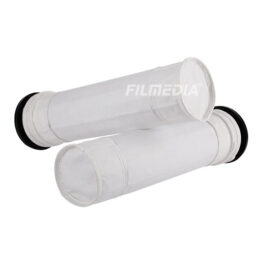Our pleated filter bags are made of high-quality and efficient fabrics with proven advantages in a variety of chemical and temperature environments. The filter bag series can be constructed in a variety of needle punched and woven forms, using a variety of fiber materials and structural designs to meet your application requirements.
- Dimension: Customized.
- Combination Method: 3-stitch sewing.
- Quality of Pleats:8 or 12.
- Optional Finish: Singeing, Heat Set, Calendering, Coating, Soaking.
- Optional Treament: Needle hole membrane covering.
Description
Ordinary bag-type dust collectors cannot meet the environmental protection requirements and must be modified to reduce the wind speed and increase the filter area of the dust collectors so as to meet the required emission standards. Pleated filter bag, also called star filter bag, is a new type of dust filter bag that can be applied to pulse bag filter. And there is a supporting dust removal framework. It is a cost-effective filtration solution that can significantly reduce costs and solve bag house capacity problems.
An innovative product from Filmedia®, the unique pleat design of the pleated filter bag doubles the usable fabric filter area in the same space compared to conventional cylindrical and oval filter bags. The pleats are gathered at snap-on straps at the top of the filter bag, so the pleated filter bag fits into the same cell plate holes as a standard bag of the same diameter. Horizontal bands sewn into the fabric ensure that the pleats are retained throughout its service life.
Material Selection
| Fiber Type | Continuous Operation Temperature | Max Operation Temperature | Resistance to Abrasion | Resistance to Hydrolysis | Resistance to Acid | Resistance to Alkali | Resistance to Oxidation |
| Polyvinylchloride(PVC) | 75℃ | 80℃ | Excellent | Good | Moderate | Moderate | Good |
| Polypropylene(PP) | 90℃ | 100℃ | Good | Excellent | Excellent | Excellent | Poor |
| Polyamide(Nylon) | 110℃ | 115℃ | Excellent | Poor | Moderate | Good | Moderate |
| Copolymer Acrylics (PAN) | 120℃ | 130℃ | Good | Good | Moderate | Moderate | Good |
| Temp.resis.Polyolefin | 125°℃ | 130℃ | Good | Excellent | Excellent | Excellent | Poor |
| Homopolymer Acrylics (PAN) | 125℃ | 140℃ | Good | Good | Good | Moderate | Good |
| Polyester(PE/PET) | 130℃ | 150℃ | Excellent | Poor | Moderate | Poor | Good |
| Polyphenylenesulfide(PPS/Ryton) | 190℃ | 200℃ | Excellent | Excellent | Excellent | Excellent | Poor |
| Aramid(Nomex) | 204℃ | 220℃ | Excellent | Poor | Moderate | Good | Good |
| Polyimide(P84) | 240℃ | 260℃ | Excellent | Moderate | Moderate | Poor | Excellent |
| Polytertra Fluoroethylene (PTFE/Telfon) | 260℃ | 280℃ | Moderate | Excellent | Excellent | Excellent | Good |
| Fiberglass | 260℃ | 290℃ | Poor | Excellent | Good | Poor | Excellent |
Features and Benefits of Pleated Filter Bags
- Significantly increase the air volume of existing dust collectors to increase production capacity
The use of pleated bags to retrofit existing precipitators eliminates the need to retrofit precipitator bodies and replaces existing bags and keels directly, increasing system filtration area by 50-150%, which is the best improvement program for improving the production efficiency and capacity of dedusting systems.
- Greatly improve the collection efficiency of dust collectors, especially PM2.5 and PM10 ultrafine dust
The use of wrinkled bag instead of ordinary round or oval bag can greatly increase the system filter area, can directly reduce the air-cloth ratio, significantly reduce the system pressure and pulse frequency, thereby significantly reducing the system’s dust emissions, especially ultra-fine dust emissions .
- Significantly reduce system operation energy consumption and maintenance costs
The use of wrinkled bag instead of ordinary round or oval bag, the pressure drop of the system is greatly reduced, the energy consumption of the fan is greatly reduced; the injection frequency is significantly reduced, and thus the compressed air usage is significantly reduced, and the loss of the injection system components is also greatly reduced.
- Extend the life of the bag
The use of pleated bags instead of ordinary round or oval bags, the unique combination of filter bags and keel completely avoids the fatigue damage to the filter bags caused by the ordinary keel transverse support rings. Combined with the lower running pressure and blowing frequency, the bag fatigue damage is greatly reduced. , life expectancy is greatly extended.
- Using a new dust collector to significantly reduce the volume of the dust collector housing
The new dust collector uses a fold bag instead of an ordinary round or oval cloth bag. Under the same air-batch ratio, the dust collector box and pulse injection system can be greatly reduced, and the initial equipment investment of the injection system can be reduced while ensuring or improving the system efficiency. And floor area.
Filter Cages
The cage of the pleated filter bag is different from the common cage, and a special cage is required due to the support requirements of pleated filter bags. A cage is an essential component in industrial filtration systems, particularly in baghouse dust collectors. Typically, it is made of metal (carbon steel, galvanized steel, or stainless steel) for durability and corrosion resistance. Learn more.
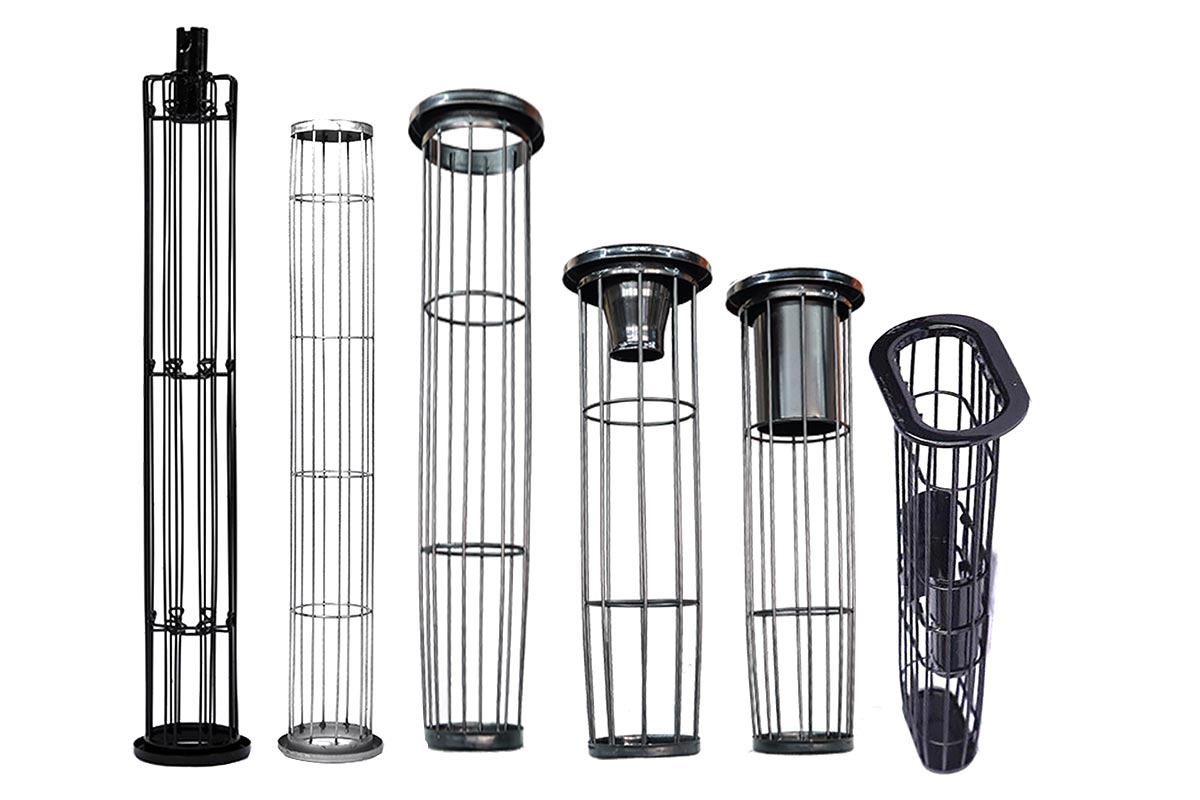
Application of Pleated Filter Bags
Pleated filter bags are commonly used for gas and liquid filtration in industrial and commercial applications. They are designed with a pleated structure that provides a larger filtration surface area, thereby increasing filtration efficiency and capacity.
- Particle filtration: It can filter tiny particles in the air and liquid, such as dust, bacteria, viruses, sediment, etc. This type of filtration is commonly used in areas such as air purification systems, industrial emissions control, and drinking water treatment.
- Oil-water separation: In industry, it is often used to separate oil and water. They can effectively separate oil-water mixtures, protect equipment from oil contamination, and avoid oil contamination of the environment.
- Chemical Filtration: It can be used to filter chemicals and corrosive substances. In the chemical industry, precise filtration of liquids and gases is an important step to ensure production quality and safety.
- Food and Beverage Processing: During food and beverage processing, solid particles, microorganisms and other impurities need to be removed from liquids. It meets the needs of these industries for efficient, reliable filtration.
- Pharmaceutical production: In the pharmaceutical industry, efficient filtration of pharmaceuticals is key to ensuring product quality and compliance with regulatory requirements. It can be used in these applications to ensure cleanliness and safety during production.
- Liquid Handling: It is also commonly used in liquid handling processes such as liquid waste treatment, sewage treatment and industrial liquid handling. They can help remove contaminants and bring liquids to certain environmental standards.



